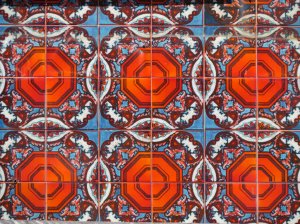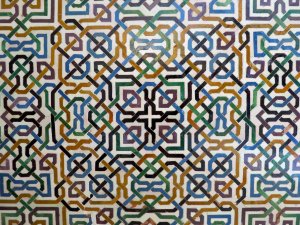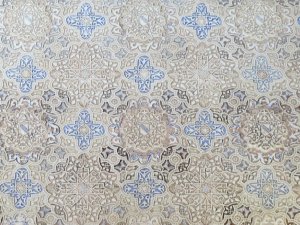Phnom Pehn, Cambodia’s capital city, is a hustling and bustling mini-metropolis located at the intersection of the Tonlé Sap and Mekong Rivers. The city was founded in the late 14th century, and during the 15th century, the Khmer Empire relocated their capital there, leaving their elaborate temple complex at Siem Reap. Like many of the other Asian cities I have visited, Phnom Pehn has an intriguing mixture of old and new. Seven-hundred-year-old pagados sit in the middle of a busy street full of modern restaurants and shops. Monks casually stroll along, while motorbikes and tuk tuks zip around them, coming close but never colliding. It’s an organized chaos, and it seems to work (Well, kind of. More than 5 people a day die from motor vehicle accidents in Cambodia). Phnom Penh’s main highlights can all be seen in one long day, but give yourself at least two or three days for exploration. Continue reading to learn more about the city’s main attractions.
A Spooky Halloween Road Trip
I’m a huge fan of Halloween (the holiday and the movie). I’m also a huge fan of road trips around the United States, so combining these two interests into one spine-tingling tour was a no-brainer (I feel like there is a zombie pun in there somewhere). Although there are plenty of haunted and scary sites to visit around the country, the northeast is the place to be for Halloween. And as a bonus, October is the best time of year to take in the beautiful fall foliage. This trip starts in Maine and ends in Washington, DC. All of the points of interest have been added to a Google Map if you want to take a closer look at the navigation. Spooky Travels!
A Magical Day in Sintra
Sintra is magical. The beautiful mountains and ocean, the well-preserved old town, and the numerous castles and forts make it one of the most unique and interesting places to visit in Europe. Sintra can be reached as a day trip from Lisbon, but you could easily spend two or more days in this beautiful UNESCO World Heritage city.
I hopped on a train in the late morning, and less than an hour later I arrived at Sintra’s train station. From there, it was an easy walk down a small hill to the old town where the Sintra National Palace and a variety of shops and restaurants were located. The real gems of Sintra are the beautiful palaces and forts that line the hills around the city. Most notable are the Pena National Palace and the Castle of the Moors.
Lisbon City Tour
Lisbon, the capital of Portugal, is a beautiful and vibrant coastal city, complemented by its rich history and culture. I noticed a similar vibe in Lisbon as I had felt in some of the Spanish cities I visited on my trip, which is to say it is very relaxed. And to top it all off, Portugal is somehow even more inexpensive than Spain.
My visit to Lisbon started at 4:00 AM following an eight-hour overnight bus ride. I knew the bus was stopping at a transit center, so I figured there would be buses or taxis or some other means of transportation to get where I was going (where was I going that early?), but I was wrong. Dead wrong. The transportation center was completely empty, and it was cold — way colder than I felt it should have been in Portugal. I found the entrance to the metro, but it didn’t open until much later either. So I waited. Actually, almost everyone from the bus waited. We walked around the station aimlessly, examining the architecture and wondering why the cafés weren’t open to receive our business. I’m convinced that Lisbon’s transit center would be the perfect setting for a fight scene in a James Bond movie — complete with concrete catwalks, lots of funky shaped objects to use as cover from gunfire, and security guards patrolling the area following predictable routes. After walking the catwalks for a while, I eventually found a bench and dozed off. Around six o’clock, the station employees arrived and opened the waiting area. All of the stragglers descended on the waiting area and laid out on the benches, napping until around eight when the transportation officially started. Such a long wait, but it was worth it for Lisbon.
Colorful Tiles in Lisbon
Ceramic tiles, called Azulejos, are a key feature of Lisbon’s architecture. A walk down any street will reveal colorful and detailed tilework on buildings, both inside and out. This beautiful tile work isn’t just on important palaces and churches either; it can be found on many regular houses, shops and public buildings. Much of the tiling consists of bright colors and elaborate shapes, but some of the tiling also depicts stories and scenes from Portuguese history.
Hasta la Vista, Spain
Spain was a blur — a good blur, but definitely a blur. The food, the history, the culture, the people, the landscape, the cities…all of these are things that I fell in love with. My time was primarily spent in the Andalucia region, so my perspective of the country is fairly narrow; however, I’ve only heard great things about the rest of Spain, and I look forward to returning some day to explore some of the other wonderful places. Here are my favorite memories from my time in Spain:
- Feeling an overwhelming sense of calm and relaxation, even from my first few minutes off the ferry
- Watching the sunset on the beautiful (and windy) beach in Tarifa
- Observing the elaborate Holy Week celebrations
- Hiking the Caminito del Rey and being thankful that I hiked it after the safety features were added
- Enjoying the nightlife in Malaga’s historical, old town
- Eating incredible tapas and Iberian ham pretty much everywhere I went
- Having a beer in Granada while overlooking the Alhambra and the Sierra Nevada mountains
- Touring the Royal Palace of Madrid with my sister
- Walking the mosque turned cathedral in Cordoba
- Seville — the entire city. I loved it.
When I return to Spain (definitely not “If I return”), some of the places I would like to explore are:
- Barcelona
- Toledo
- Valencia
- Pamplona, home of the running of the bulls
- Northern coastal cities, like San Sebastian (in the east) and Santiago de Compostela (in the west)
- Maybe even complete one of the world-famous walks, like the Camino de Santiago (800 km, 500 mi)
Seville City Tour
Seville (Sevilla) is the largest city and capital of Andalusia. Originally founded by the Romans in the 8th century, Seville was also under Muslim rule, before Christians gained control in the 13th century. Despite its inland location, Seville was a key port during the colonization of North and South America thanks to the Guadalquivir River and the trade monopoly it was given by the king of Spain. Cádiz eventually replaced Seville as the main trade port in Spain.
In my mind, Seville is the quintessential Spanish city. A short walk among the city’s winding streets showcases some of the iconic Spanish imagery that the country is known for, such as bull fighting, street cafes and flamenco dancing. With numerous restaurants and a vibrant nightlife, Seville was also one of the more active cities that I visited. I might even feel comfortable saying it was my favorite city in Spain (although I loved them all).
Madrid City Tour
Madrid is the capital of Spain and is its largest city with over three million residents. The city was originally founded under Arab rule in the 9th century. Following Christian conquest, most of the city’s Arab influences were destroyed or removed leaving Madrid with a very different look and feel than the cities in southern Spain. Madrid was established as the permanent capital in 1606 and has remained the capital for over 400 years.
I found Madrid to be a pleasant combination of old and new, with impressive architecture, parks, historical buildings, art and food (obviously). Some of the key attractions are discussed in more detail below.
Street Performers in Madrid
I have a confession to make. I love street performers. No, not talented musicians, artists, or dancers that perform their crafts on the street for money (although I like them too). I’m talking about street performers who act as human statues or wear terrible knock-off costumes of cartoon characters. In fact, the worse the knock-off, the better. Yes, they are silly, sometimes tacky and occasionally anti-Semitic, but I still love them (well, not the anti-Semitic part). You could call them a guilty pleasure.
Colors and Patterns in the Alhambra
After spending over a month in Morocco and southern Spain, one of the things that stood out to me was how much intricate detail was put into the floors, walls and ceilings of many buildings. The finer details were typically reserved for palaces and larger homes, but even smaller guest houses would often have beautiful entrances and tiled walls. The Alhambra, a Moorish palace in Granada, has some of the most beautiful and detailed tile work in the world. Most of the designs include colorful, repeated patterns and arabesques, which are both commonly found in Islamic art. Some of the patterns in the Alhambra include rosettes (round flower patterns), tessellations (repeated shape patterns), and knots (braided patterns). For a more in-depth analysis of the common patterns in the Alhambra, click here.


























